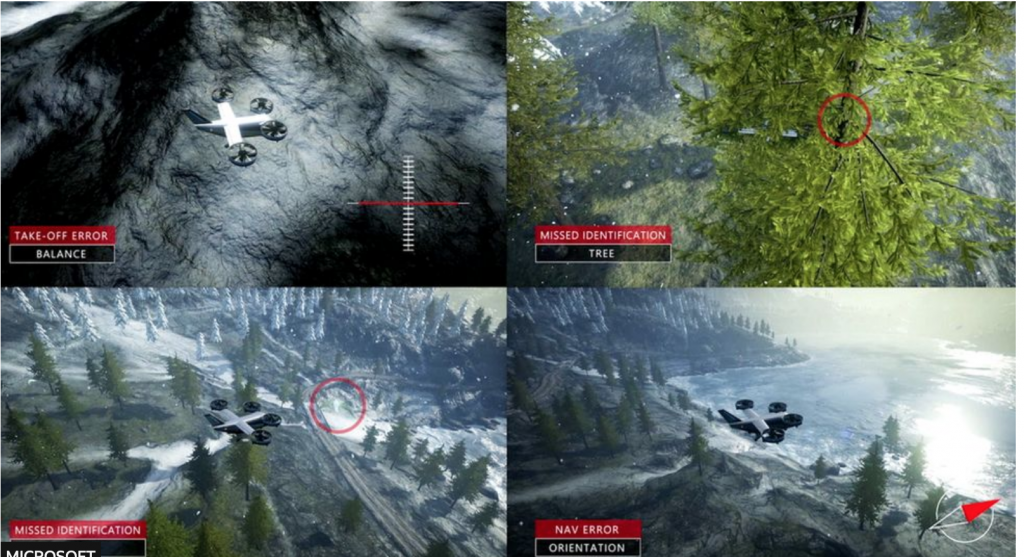
Four simulated drones fly through forest settings in AirSim
Pilots Rack Up More Virtual Training on Simulators before Guiding Autonomous Drones
Rookie drone pilots that can’t seem to get the hang of cruising the skies have a new way of training. Microsoft has introduced a new simulator this week.
Project AirSim is a flight simulator for drones that companies can use to train and develop software controlling them. It makes it possible to test flights in places that would be too risky in reality, such as near power lines. It also means that millions of flights can be simulated in seconds, according to Microsoft. For example, companies can virtually see how the vehicle flies in rain, or how strong winds might affect its battery life. According to a story on bbc.com:
In a statement announcing the launch, Microsoft’s Gurdeep Pall said that it showed “the power of the industrial metaverse—the virtual worlds where businesses will build, test and hone solutions, and then bring them into the real world.”
However, Project AirSim’s history is more recent, growing out of an open-source project of the same name that was used by a number of researchers. Microsoft has announced that it will retire that project. Users will still have access to the original open-source project’s code, the company told the BBC, but it will be archived, and instead, the firm will focus its efforts on the new product.
The simulator already has a very happy client that deals with huge wind turbines. U.S. firm Airtonomy was given early access to the platform. Airtonomy uses drones to inspect infrastructures, such as wind turbines and power lines.
Chief executive Josh Riedy told the BBC that previously a “crew of three individuals rappelled down those blades—the towers are at a height of 80m (262 ft), so not only was it a nearly a day-long job for three individuals, safety is certainly a consideration.”
Now the drones fly autonomously and can be controlled by only one person on the ground.
“They simply need to know how to put batteries in a drone, and push a button,” Riedy said.
Another giant step forward with the use of the digital universe that could save millions of dollars in the process by avoiding problems in the real world.
read more at bbc.com







Leave A Comment